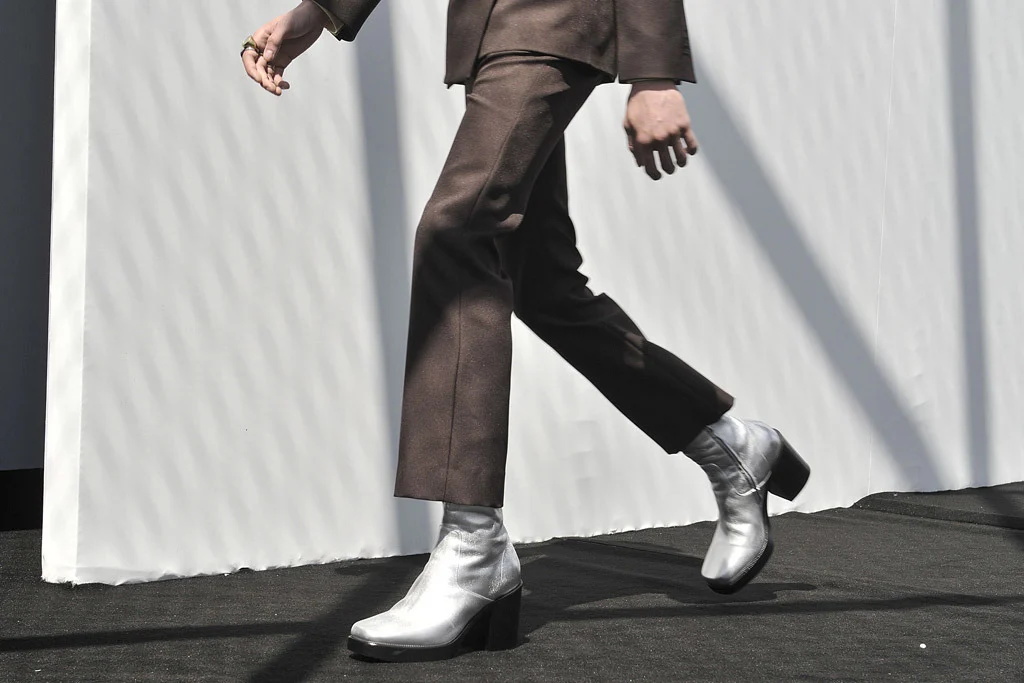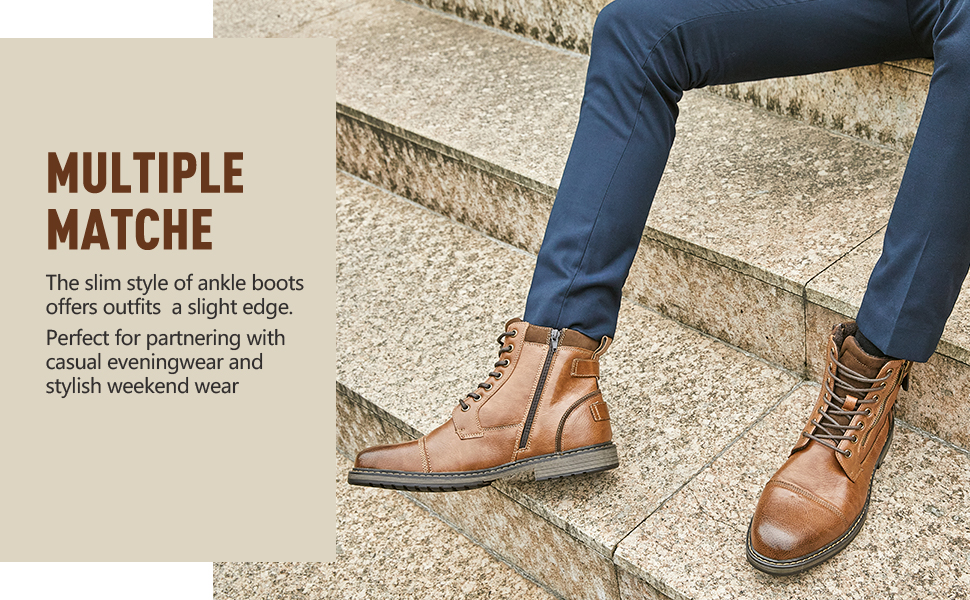The issue of “how to walk in heels for men” may annoy a lot of guys who want to try the feeling of high heels. Though high heels are now strongly associated with women’s fashion, they were originally worn by men and have gone in and out of style for both genders. From cowboy boots to embellished pumps, heels allow men to stand tall while making a bold fashion statement and displaying masculinity and confidence.
Although heels may initially be uncomfortable and require practice to walk in gracefully, any man can master strutting in stilettos or sneaking in sneaker wedges with proper preparation and technique.
This comprehensive guide will closely compare today’s traditional and hidden heel styles (elevator shoes) and provide extensive step-by-step instructions for walking with poise and stability. By the end, you will have all the insider know-how to walk a mile in heels easily, even if you have never worn them.
The History of Men’s High Heels
Contrary to popular belief, heels were not solely designed for women, they were originally men’s shoes. In the 10th century, Persian horsemen slipped on heels to secure their feet in stirrups and maintain stability while riding. In the 16th century, European nobility flaunted heels to exhibit wealth. The higher the heel, the more critical the wearer.
By the 18th century, heels became a staple in men’s formalwear. The slimmer the heel, the more masculine it was perceived. Although women adopted heels in the 20th century, genderless heels reemerged in modern fashion. From embellished stilettos to subtle Chelsea boots, men embrace heels today to portray confidence and identity.

Traditional Men’s High Heels vs. Hidden High Heels (Elevator Shoes)
When considering wearing high heels today, men have two main style options: traditional or hidden heels. Traditional heels like wedges, platforms, pumps, and lace-up boots have an exposed elevated heel that is visible. Although very bold, stylish, and statement-making, traditional heels have some inherent drawbacks:
Pros:
- Striking, fashion-forward look
- Maximizes height boost
- Wide variety of styles
Cons:
- Discomfort and foot fatigue
- Compromised balance and stability
- Requires practice to walk smoothly and confidently
Hidden heels, like men’s elevator shoes, feature discreet built-in heel lifts concealed inside the sole. Externally, the shoes resemble regular flat sneakers, loafers, or lace-ups.
Pros of Hidden Heels:
- Enhanced comfort and foot support
- Maintains stability for easier mobility
- Height boost is hidden and subtle
- Keep the normal shoes look
Cons of Hidden Heels:
- Less dramatic and bold external style
- More limited style variety than traditional heels
- Potential for social stigma due to concealment
When selecting heels, you must weigh your priorities and preferences, such as visible style versus comfort and stability. Traditional heels spotlight bold, eye-catching style, while hidden heels focus on comfort and discreet height boosting.
How to Walk in Traditional Heels For Men
Walking smoothly and gracefully in traditional heels with exposed lifts requires careful preparation and consistent practice:
- Select heels in the correct size to prevent painful slippage and irritation. For beginners, opt for a wider heel base and lower heel height under 2 inches.
- Maintain a proper upright posture. Engage your core muscles and balance your weight over the heels, not leaning on the toes. Take shorter, straight strides instead of your regular gait.
- Step heel to toe. Land each step first on the heel, then smoothly roll forward and shift your weight to push off from the toe. Avoid bending knees outward or pointing feet in exaggerated angles.
- Maintain balance by planting feet hip-width apart with each step. Refrain from excessive side-to-side swinging of the arms or torso. Consider walking near rails, walls, or furniture to hold lightly for support.
- Insert cushioned insoles or pads for increased comfort and support. Gel pads can also help relieve pressure on the balls of the feet.
Start by practicing walking at home on carpeted floors. As technique and balance improve, wear heels for longer periods and on more varied terrain. Proper preparation and a cautious pace prevent spills, foot pain, and instability in traditional heels.

How to Master a Natural Walk in Hidden Heels
Men’s hidden heel shoes with interior lifts require less drastic technique adjustment but still benefit from practice and acclimation:
- Select the proper men’s shoe size. Ensure the hidden heel lift height provides enough elevation while remaining comfortable. Break in new pairs slowly at home before wearing them for long durations. Some comfortable sizes includes men’s 3 inches heeled boots, men’s 2 inches heel shoes and men’s dress shoes 4 inch heel.
- Maintain a good upright posture. Engage core stomach and back muscles and keep your head level. Lead with your heel when striking the floor, then smoothly roll through each step from heel to toe.
- Take natural strides, transitioning fluidly from heel-to-toe push-off. Do not lock the knees or point the feet outward excessively. Let your gait flow naturally.
- Build balance and leg muscle endurancethrough calf raises, squats, lunges, and standing on one foot. Strong supportive muscles enable you to walk smoothly and gracefully.
- Consider cushioned insoles or rubber sole grips if needed to increase comfort and traction. That can reduce slippage on slick surfaces. Another choice is buying a pair of professional height-increasing shoes. Here I will recommend the Chamaripa elevator shoes.
With consistent practice, hidden heels allow you to walk naturally and comfortably while secretly boosting your height. Friends will be asking how you suddenly became so tall!

Conclusion
Men’s high heels have a rich cultural history that continues to influence modern genderless fashion. With knowledge of the heel options, proper preparation, and walking technique, heels can elevate your style and become a prideful part of your wardrobe.
Remember to start low and slow when selecting a heel height, and practice walking at home on various surfaces. Maintain good posture and weight distribution through each stride. Most importantly, choose heels that match your priorities and comfort levels – bold and stylish or discreet and stable. Soon, you’ll be strutting those heels proudly.

